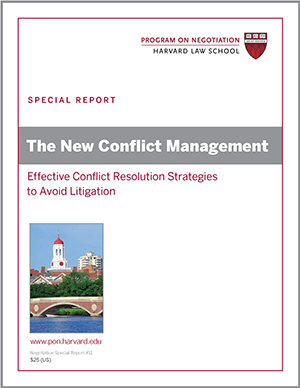
Group negotiations are a fact of managerial life, yet the outcomes of teamwork are highly unpredictable. Sometimes, groups cohere, reaching novel solutions to nagging problems, and sometimes infighting causes them to collapse. This is where you may find a case study of conflict management helpful.
How can you predict when the conflict will emerge in groups, and what can you do to stop it?
The following is drawn from a case study of conflict management and negotiation involving multi-party negotiation scenarios. Dora Lau of the Chinese University of Hong Kong and Keith Murnighan of the Kellogg Graduate School of Management at Northwestern University have examined group conflict in terms of fault lines the cracks that result when groups split into homogenous subgroups according to demographic characteristics.
For instance, in a four-person group made up of two white males in their forties and two African American females in their twenties, a very strong fault line would exist, one clearly defined by age, gender, and race. In a group consisting of one white male, one Asian male, one Hispanic female, and one African American female, all in their thirties, fault lines would be less evident.
A Case Study of Conflict Management – Divisions in Group Negotiation
Recently Katerina Bezrukova of Rutgers University and her colleagues compared the effects of fault lines based on social categories (e.g., age, race, or gender) with those based on information (e.g., education or work experience). Their negotiation research found that groups with strong information-based fault lines perform better than groups with strong demographic-based fault lines.
While the latter create dysfunctional conflict within the group, information-based fault lines provide the diversity of information needed for effective performance – in other words, they provide functional conflict.
These studies provide useful hints on how diversity can be effectively managed. Specifically, when forming teams, avoid obvious demographic fault lines that would allow group members to split into categories. When broader diversity exists, fault lines can simply disappear.
Related Conflict Resolution Article: Conflict Management and Negotiation: Personality and Individual Differences That Matter – How much do personality differences matter in negotiations? Negotiation research has found that negotiators perform similarly from one negotiation to another negotiation and that performance was only slightly impacted by other variables at the bargaining table like personality traits. Unchanging traits, like gender, ethnicity, and level of physical attractiveness, were not tied to negotiation performance. Some traits did affect negotiating performance, however, and in this study, those factors identified by the latest negotiation research are outlined and discussed. How can your beliefs about negotiation impact your ability to negotiate? Read more for negotiation skills and negotiation techniques a negotiator can do to mitigate the impact of these variables on her negotiating performance.
What is your favorite case study of conflict management? Let us know in the comments.
Originally published in 2012.





I would love to consider the details of the research that suggests that “demographic fault lines” produce dysfunction in groups. The conclusion has a very subtle bias that could benefit from further investigation. Is it at all possible that the information and proposals are considered differently by people operating in different social contexts and that by “avoiding obvious demographic fault line” the management practice is to simply allow the internal power dynamics – which often have differential impacts along certain demographic fault lines – to play out unimpeded?